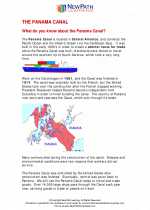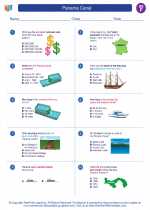Latitude and Longitude
Latitude and longitude are geographic coordinate systems used to locate places on the Earth's surface. They provide a way to specify a location's position in terms of its distance from the equator and the prime meridian.
Latitude
Latitude lines run east-west around the Earth and measure the distance north or south of the equator. The equator is designated as 0 degrees latitude, and lines of latitude are measured in degrees from 0° at the equator to 90° at the poles. The Northern Hemisphere is designated with N for north, while the Southern Hemisphere is designated with S for south.
Longitude
Longitude lines run north-south from pole to pole and measure the distance east or west of the prime meridian. The prime meridian, located in Greenwich, England, is designated as 0 degrees longitude. Lines of longitude are measured in degrees from 0° at the prime meridian to 180° east or west. The Eastern Hemisphere is designated with E for east, while the Western Hemisphere is designated with W for west.
Coordinate Notation
Locations on Earth are expressed using both latitude and longitude coordinates. For example, the coordinates for the city of Paris, France are approximately 48.8566° N latitude, 2.3522° E longitude.
Study Guide
- What are latitude and longitude?
- How are latitude lines measured?
- What is the equator and where is it located?
- How are longitude lines measured?
- What is the prime meridian and where is it located?
- What is the coordinate notation for a location on Earth?
- Identify the latitude and longitude coordinates for specific locations on a map.
Understanding latitude and longitude is essential for navigating and locating places on Earth. It also helps in understanding the Earth's geography and climate patterns.
[Latitude And Longitude] Related Worksheets and Study Guides:
.◂Social Studies Worksheets and Study Guides Sixth Grade. Panama Canal

 Worksheet/Answer key
Worksheet/Answer key
 Worksheet/Answer key
Worksheet/Answer key
 Worksheet/Answer key
Worksheet/Answer key
